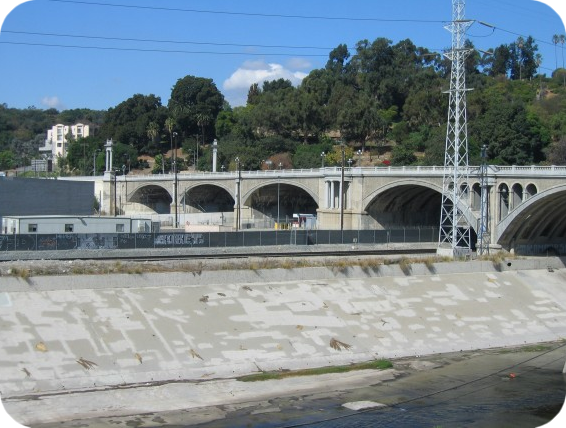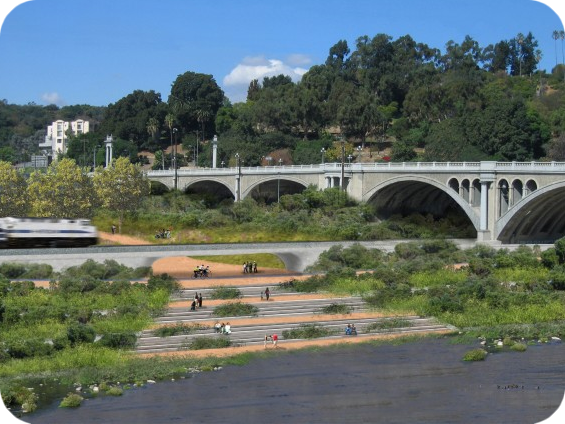Application: Canals, wastewater treatment plants
Description: The main objectives of urban river terracing are flood protection, master landscaping, and the improvement of environmental conditions. The philosophy is to move from flood resistance to flood accommodation. In a stream area, the flood plain is widened and deepened, allowing it to fill during rain events and preventing storm water from flooding urban areas. Between heavy rain events, the floodplain is made available as a park and green space for local residents. Secondary channels are built parallel to the main stream to allow for more drainage during heavy rainfall. Dykes, streambed stabilisation, and other technologies used to guide the stream are built using natural materials to maximise water filtration and rehabilitation benefits.
Contribution to climate resilience: Urban river terracing prevents storm water from flooding urban areas. In addition, natural materials used to guide the stream provide water filtration and act as habitat for fish and other wildlife. This is part of increasing the preparedness of cities for the greater floods that are likely to be associated with future climate change.
Supplementary sources of information:
http://www.slideshare.net/DutchEmbassyDC/room-for-the-river-presentation-2011
http://deltaproof.stowa.nl/Publicaties/deltafact/Room_for_the_river.aspx?pId=48
http://blogs.kcrw.com/dna/l-a-designer-mia-lehrer-l-a-s-landscape-architect
http://waterandthedutch.com/delta/
Background image credit: https://www.archdaily.com/592872/the-building-centre-presents-rethinking-the-urban-landscape/54ca9d22e58ece99010002a6-avon-river-precinct
This resilience-building measure is sourced from the Water Resource Adaptation Guide (2019) published by the National Council for Sustainable Development at the Ministry of Environment in Cambodia. The full Guide is available to download at URL https://ncsd.moe.gov.kh/sites/default/files/2019-10/Water%20Resources%20Adaptation%20Guide_March%202019_En.pdf


